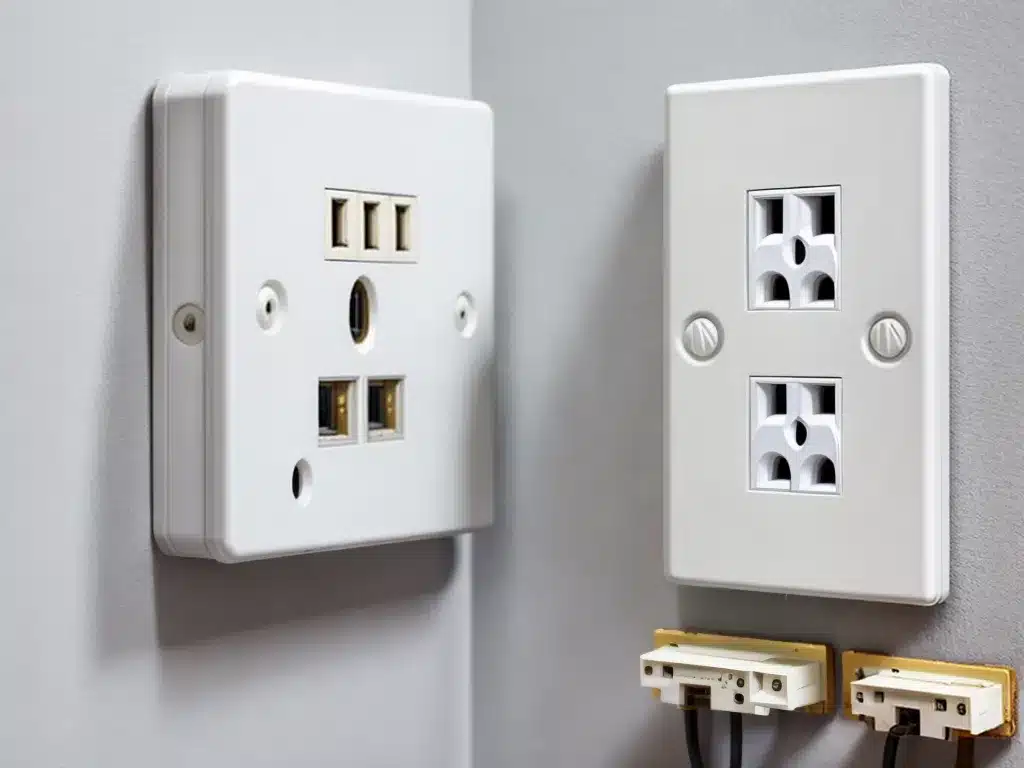
How to Make Your Home More Electrically Safe Without Replacing Old Sockets
Improving the electrical safety of your home doesn’t have to involve a complete rewiring or socket replacement. There are several simple, cost-effective ways I can make my home more electrically safe while still using the existing older sockets and wiring.
Identify Potential Hazards
The first step is to thoroughly inspect my home to identify any potential electrical hazards. Here are some things I should look for:
-
Frayed or damaged power cords – These can easily start fires and cause shocks. I need to repair or replace any questionable cords.
-
Overloaded outlets – Too many appliances plugged into one outlet can cause overheating. I should avoid “daisy chaining” power strips and extension cords.
-
Exposed wiring – Any exposed copper wiring poses a serious shock hazard, especially for children. I need to securely cap all exposed wires.
-
Cracked or loose wall plates – Damaged cover plates allow access to dangerous live wiring. I should replace any suspicious looking wall plates.
-
Discolored outlets – Very warm or melted-looking outlets often indicate an unsafe electrical connection that needs servicing.
-
Lights flickering/dimming – This may signal an outdated electrical panel that’s overwhelmed. I should have it inspected by an electrician.
Use Outlet Covers
A simple way to make old outlets safer is by installing tamper-resistant receptacles. These have a built-in shutter system that prevents foreign objects from being inserted. I should install these in areas my children frequent.
For unused outlets, I can install decorative covers to prevent any curious fingers from getting shocked. I should securely fasten all outlet covers to prevent tampering.
Update With GFCIs
One of the best upgrades I can make is replacing standard outlets with GFCI (ground fault circuit interrupter) outlets. These outlets provide protection from severe shocks by detecting abnormal current flows.
I should prioritize installing GFCIs in bathrooms, kitchens, garages, and basements – locations where water contact is likely. Shutting off the appropriate circuit and switching out a normal outlet for a GFCI outlet is a relatively easy DIY project.
Have An Electrician Do a Safety Check
While I can make some safety fixes myself, it’s wise to have a licensed electrician do a thorough inspection of my electrical system annually.
An electrician can check for:
- Faulty wiring
- Grounding issues
- Lightning and surge protection
- Overloaded circuits
- Code compliance
They have the expertise to spot and remedy hazards I may miss. I should ask about recommended upgrades given the age of my home’s wiring.
Consider a Whole Home Surge Protector
Power surges from lightning strikes or grid fluctuations can damage equipment and start electrical fires. Installing a whole home surge protector at my main electric panel provides broad protection from such surges. This is an upgrade I may want an electrician to handle.
Practice Electrical Safety Habits
Along with safety fixes, smart usage habits reduce electrical risks:
-
I should unplug appliances when not in use to prevent shocks and minimize fire risks.
-
I need to ensure I never overload outlets by plugging in too many devices.
-
I should avoid running cords under carpets or furniture as this can damage wiring and cause fires.
-
I must never put anything other than plugs into outlets to avoid shocking accidents.
With some diligence inspecting my home and a few strategic upgrades, I can enjoy safer electricity without undertaking major rewiring projects. But I need to remain vigilant and have regular electrician check-ups. Practicing good electrical habits is also key – my vigilance is essential for protecting my family.
